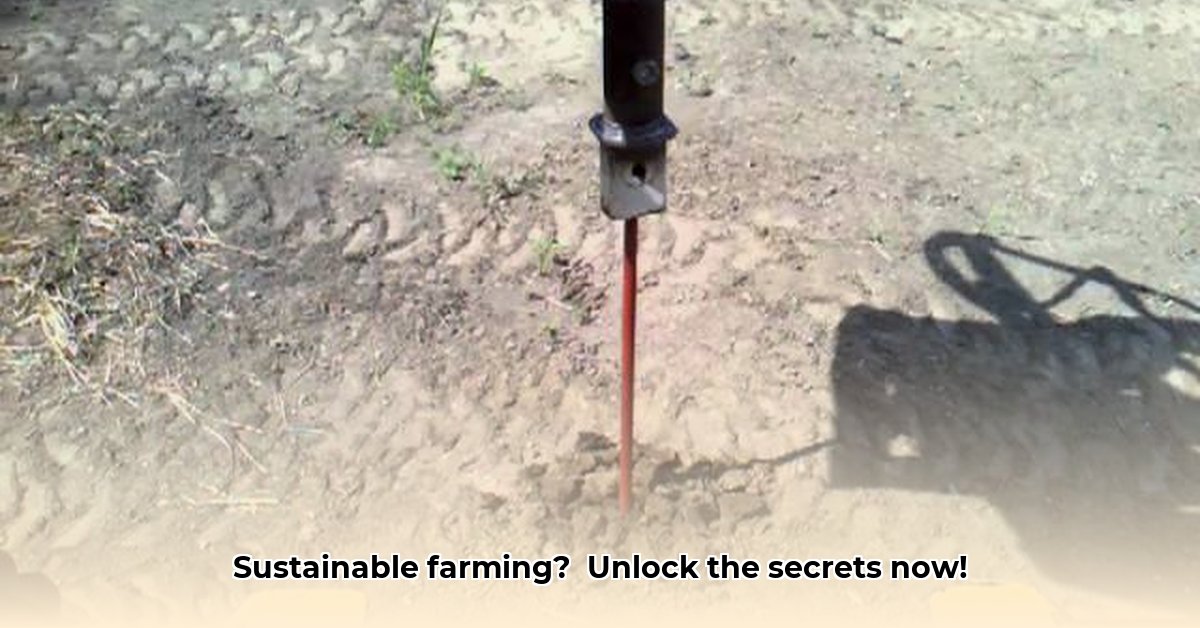
Understanding Earth Anchors: A Foundation for Sustainable Agriculture
Earth anchors are versatile tools rapidly gaining traction in sustainable farming. These robust anchors secure various structures, minimizing soil disturbance and maximizing resource efficiency. From irrigation systems to windbreaks, their applications are broad, significantly impacting farm profitability and environmental stewardship. This guide provides a comprehensive overview, empowering you to leverage earth anchors effectively. For additional resources on farm equipment, check out Tractor Supply resources.
Types of Earth Anchors: Material Choices and Strength Capabilities
Several earth anchor designs cater to diverse soil conditions and applications. Understanding their strengths and weaknesses is crucial for optimal selection. Visual aids (diagrams and photos) would complement this section effectively.
Galvanized Steel Anchors: These are durable and rust-resistant, ideal for heavy-duty applications and harsh climates. Their robust construction ensures long-term stability, though they are heavier and may require more installation effort.
Recycled Steel Anchors: An environmentally friendly option, recycled steel anchors offer a balance between strength and sustainability. Their use contributes to reduced carbon footprints and responsible material sourcing. However, their holding capacity might be slightly lower than galvanized steel counterparts.
Other Materials: Several alternative materials exist, including high-density plastic and composites. These may be suited for specific applications, but careful consideration of their strength ratings and environmental impact is critical. Always check manufacturer specifications to ensure suitability for your needs.
The crucial specification to consider is the anchor's holding capacity, typically measured in pounds or kilonewtons. Always ensure the capacity exceeds the weight of the structure being secured. Consult Tractor Supply staff for assistance in matching anchors to specific applications.
Applications in Sustainable Agriculture: Enhancing Efficiency and Environmental Impact
Earth anchors offer multiple applications in sustainable agriculture, with benefits extending beyond simple structure support:
Irrigation Systems: Secure drip lines and sprinklers, ensuring efficient water distribution and minimizing water waste, a critical aspect of water-wise farming.
Windbreaks: Protect crops from damaging winds while reducing soil erosion from wind, leading to healthier, more productive soil over time.
High Tunnels: Provide secure support for high tunnels, extending growing seasons and maximizing crop yields while minimizing the environmental impact of traditional structures.
Solar Panel Arrays: Securely anchor solar panel arrays, harnessing renewable energy with minimized land disturbance. This aligns with sustainable energy practices.
Erosion Control: Anchor erosion control blankets or other materials to minimize topsoil loss, safeguarding soil fertility and long-term land productivity. This is a crucial aspect of regenerative agricultural practices.
Selection & Installation Guide: A Step-by-Step Approach
Choosing and installing earth anchors correctly is vital for long-term performance and effectiveness. Follow these steps for optimal results:
Soil Assessment: Conduct a thorough assessment of your soil type—sandy, clay, or rocky—to select appropriate anchors and adjust installation techniques accordingly.
Anchor Selection: Choose anchors with a tensile strength significantly exceeding the load requirements. Consider environmental impact: recycled materials are a sustainable alternative.
Hole Preparation: Dig holes appropriately sized for the chosen anchors, following manufacturer instructions. Careful excavation minimizes soil disturbance.
Anchor Placement & Setting: Place the anchors securely in the prepared holes, following the manufacturer's guidelines for setting techniques. Using proper tools ensures proper installation.
Backfilling & Compaction: Backfill the holes with soil and compact it thoroughly, ensuring the anchor’s stability and longevity.
Maintenance and Longevity: Ensuring Long-Term Performance
Like any investment, regular maintenance is key to maximizing the lifespan of your earth anchors.
Regular Inspection: Inspect anchors periodically for signs of corrosion, especially in humid or wet environments.
Corrosion Protection: Apply rust-resistant coating or paint to enhance longevity, especially for steel anchors.
Repair/Replacement: Address damaged or loose anchors promptly to avoid structural failures and further soil disruption.
Economic Considerations: Balancing Initial Costs and Long-Term Benefits
While upfront costs may seem significant, consider the long-term savings. Earth anchors prevent damage to equipment, minimize water waste, and protect your land investment. The overall cost-effectiveness should be evaluated within this longer timeframe.
Conclusion: Building a Sustainable and Prosperous Farm
Earth anchors are essential tools for building sustainable and profitable farming practices. By applying the proper selection, installation, and maintenance strategies outlined in this guide, farmers can maximize their return on investment while preserving the health of their land. Remember, consulting with Tractor Supply experts is always recommended for selecting the most suitable anchors for your specific needs.
Resources
This section would include links to relevant websites, research papers, and product information from manufacturers.